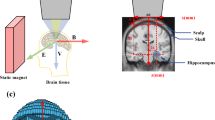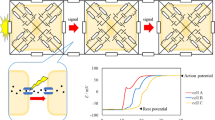Purpose
The slope of the dose-response curves of inhalation anesthetics is steep around the minimum alveolar concentration of inhalation anesthetics (MAC) value. Contrastingly, the anesthetic dose-response curves of ion channels and enzymes are gradual. This discrepancy in the steepness may be a key to solve the mechanisms of anesthesia. To explain the steepness we propose a mathematical model of the neural network related to MAC.
Methods
We assumed that, in order to show movement in response to a noxious stimulus, a signal needed to be transmitted from A to B. There are m conduction pathways (Multi-Path) in the nerve network between A and B, and there are n conduction units (Multi-Unit) in each conduction pathway. Anesthetics bind to each conduction unit and block signal transmission. Anesthetics prevent movement in response to a stimulus, when at least one conduction unit among all conduction pathways has been blocked. We derived the equation for the probability of the signal being blocked by anesthetics.
Results
The steep dose-response curve of in vivo anesthesia requires a very large number of conduction units (n ≫ 100) and conduction pathways (m ≫ 106). The EC 50 for each conduction unit was at least 3.8-fold larger than the apparent EC 50 for the whole system under the experimental condition of simulation.
Conclusions
We constructed a model for the neural networks that relates to MAC as a Multi-Unit and Multi-Path system (MUMPS). To obtain highly cooperative dose-response curves comparable to those of in vivo anesthesia, at least 106 conduction pathways and more than 100 conduction units are required for each pathway. In these systems, the apparent anesthetic potency on the whole system (MAC) is much stronger than the anesthetic action on each unit. Because of this discrepancy, it is important to set anesthetic concentrations appropriately for experiments with in vitro systems.
Similar content being viewed by others
Author information
Authors and Affiliations
About this article
Cite this article
Kaminoh, Y., Kamaya, H., Tashiro, C. et al. Multi-Unit and Multi-Path system of the neural network can explain the steep dose-response of MAC. J Anesth 18, 94–99 (2004). https://doi.org/10.1007/s00540-003-0224-2
Received:
Accepted:
Issue Date:
DOI: https://doi.org/10.1007/s00540-003-0224-2




